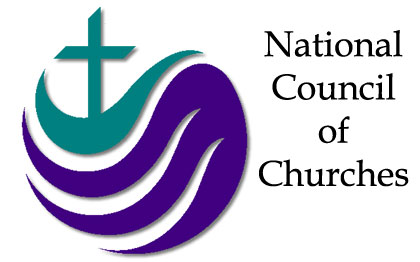In October of 1992, on the occasion of the quincentenary of Columbus’ landing on the shores of our continent, the Center for Italian Studies at Stony Brook University brought together a dozen or more scholars from different disciplines for a two-day symposium on the theme: Columbus: Meeting of Cultures. From its outset, the symposium was meant to assess the impact that Columbus’s legendary voyages had on both the “old” and “new” continent from multi-ethnic or cultural perspectives. We wanted to create a forum where new scholarly findings and views could be presented, tested and even debated in a period when too many new views, not grounded in serious scholarship, were being thrown around. Mass-media and armature scholars were having a field day stirring up interest in the historical event by raising issues through sound-bite or by engaging in a debate on issues that had everything to do with today and nothing to do with five centuries ago. In effect, they were judging Columbus outside of his historical context.
It is foolish to continue to rehash the issue of who arrived here first. In fact, today, historian scholars are no longer concerned about that. Even if it could be proven beyond reasonable doubt that Africans, or Phoenicians, or Jews crossed the Atlantic long before the birth of Christ, historians will ask the bottom-line question: what difference did it make? We know that Columbus’s voyage did make a difference, a profound difference because, unlike the journey of his predecessors, his voyage set in motion a process of huge, historical change, both in the world from which he came and in the world that he found. No one disputes that any longer. What is being and deserves to be disputed today is what those worlds were like and how and why they changed in the encounter.

An article appearing in the October 1992 issue of Discovery well reflects the tone and the sense of the debate. Written by Jared Diamond and bearing the title “The Arrow of Disease,” the article calls the attention of the reader to the destructive means used by the Europeans in their operation of “conquest.” It states that “when Columbus and his successors invaded the Americas the most potent weapon they carried was their germs.” With the European conquest of the Americas that began with Columbus’s voyage of 1492, “numerous as the Indian victims of the murderous Spanish conquistadores were, they were dwarfed in number by the victims of murderous Spanish microbes. These formidable conquerors killed an estimated 95 percent of the New World’s pre-Columbian Indian population.” The article finishes by stating: “So on this five hundredth anniversary of Columbus’s discovery, let’s try to regain our sense of perspective about his hotly debated achievements. There’s no doubt that Columbus was a great visionary, seaman, and leader. There’s also no doubt that he and his successors often behaved as bestial murderers… Without the germs Europeans brought with them — germs that were derived from their animals — such conquests might have been impossible.”
 Because of the weight it carried, also worthy of note is the resolution passed by the Governing Board of the National Council of Churches (N.C.C.) at its May 1990 meeting. In condemning the celebration of the event, the Board passed a resolution which stated: “For the descendants of the survivors of the subsequent invasion, genocide, slavery, ‘ecocide’ and exploitation of the wealth of the land, a celebration is not an appropriate observance of this anniversary.” The resolution pointed to the evils of “slavery,” “economic exploitation” and environmental degradation that came with the event. In an article which appeared in The Nation (19 October 1992), Columbus is compared to Hitler, and the atrocities committed by his successors to those committed at Auschwitz.
Because of the weight it carried, also worthy of note is the resolution passed by the Governing Board of the National Council of Churches (N.C.C.) at its May 1990 meeting. In condemning the celebration of the event, the Board passed a resolution which stated: “For the descendants of the survivors of the subsequent invasion, genocide, slavery, ‘ecocide’ and exploitation of the wealth of the land, a celebration is not an appropriate observance of this anniversary.” The resolution pointed to the evils of “slavery,” “economic exploitation” and environmental degradation that came with the event. In an article which appeared in The Nation (19 October 1992), Columbus is compared to Hitler, and the atrocities committed by his successors to those committed at Auschwitz.
Columbus has become one of the worst villains in history. This is a completely different picture from that presented one hundred years ago when his stature was brought to new heights during the celebrations of the four-hundredth anniversary held all over this continent and Europe. Indeed, until a few years ago, the landing of Columbus on the shores of this continent was seen as an occasion to celebrate the most famous watershed in history, an event identified in all school books across the world as marking the beginning of the Modern Age. Columbus’s landing in these parts of the world was seen as the beginning of a new world order, economically, culturally, as well as politically. Columbus was portrayed as the first modern man and his landing, with his human and cultural profile, was closely tied to his age.

For centuries, Columbus and his venture were connected to the latter part of the fifteenth century; they were made representative of a period possibly unique in the history of humanity; it was a period when the clear vision of politicians, the creative entrepreneurship of merchants, the common man’s desire to know and discover, and a taste for formal perfection all came together to form the spirit of Humanism and Renaissance. Most of us grew up believing in the established view that Columbus was the Renaissance man par excellence, a man that affirmed the value of human independence and dignity, along with his aspiration to be the sole, authentic maker of his own destiny. We had come to view Columbus as the universal man who had the courage to press beyond the confines of the known world while projecting himself beyond the limitations of separate national individualities. In the West, or better yet, in Western Civilization, Columbus was presented as the hero who sparked a unique and extraordinary period of economic and social expansion, of growth and progress, of new and exciting discoveries in the fields of science and technology. Europeans felt very comfortable with these views; the Italian-Americans had become very proud of this hero and rightfully pressed Congress to make October 12 a national holiday.

All that is being questioned and/or challenged today. And there are good reasons for it because the consequences of Columbus’s historical voyage were not benevolent for the indigenous people. The impact of his voyages has to be assessed also from the Native American perspective, that is, how the American Indians fared in the encounter. As in every event of world-wide magnitude and of profound change, before harmonious levels of human relations are socially and politically reached, good may come with destruction.
However, a great deal of the controversy on Columbus has very little to do with 1492 and almost everything to do with 1992. It is a problem of truth — an intellectual problem, obviously, but political as well; indeed, it has become mainly political. In this debate, the values of the “West” are being questioned. Critics of “Eurocentrism,” influenced by “postmodernism,” have succeeded in focusing much attention on the issue of cultural relativism. Postmodern thought holds that reason has become “pluralized” and relativized, and that reality is indeterminate. Knowledge exists only as “regimes” of knowledge, which is to say, as political systems that dictate that certain things are so, and use power, pain and reward to make this accepted.
No scholarship is free of political and cultural biases, but serious scholars resist them. “Knowledge” can be revised properly only if, in the process of constant re-evaluations and reviews, the “agents” of truth are able to keep their distance from both established and revolutionary powers.
In assessing Columbus’s landing on this continent, many issues do need to be readdressed. Issues such as “slavery,” “genocide,” “ecological rape,” “systematic destruction,” which for the most part have been the domain of sound-bite, passionate, sensational journalism, need the attention of seasoned scholars whose faith and love for intellectual and scholarly inquiry will set them apart from the unrealized politicians.
Columbus was not the gem of the ocean, the flawless hero of so many earlier hagiographies. However, much of the contemporary historiography, by just being interested in a passionate ‘‘deconstruction” of Columbus, will contribute nothing to the better understanding of an event that changed both Europe and America. In the process of reevaluating Columbus in this age of complete disdain for heroes, we are presented with another mythical figure, one of the most destructive villains in history who landed on a mythical land, a kind of earthly paradise, uncorrupted until 1492. The problem is congenital to history. Usually, the destruction of myths is done through the creation of other myths.

Stephan Thernstrom, an historian at Harvard, rightfully said that the descriptions of the European conquest of the Americas in black-and-white terms are no more reliable than Stalinist histories of the U.S. Whether we like it or not, Thernstrom says that much of history “is the story of what the strong have done to the weak — and of shifts in the bases of power that undermine the position of the once-strong and lead to their decline and fall.” And it’s not as though the inhabitants of the Americas did not do the same kinds of things to each other — their history also features wars and the brutal subjugation of conquered peoples. And so, there is simply no basis for seeing the clash between the Indians and the invading Europeans in stark good and evil terms — the peaceful innocents versus the murderous and avaricious Spaniards.
Much has been said about the “genocide” carried out by the Europeans. However, the population drop of the American natives by at least one-third and perhaps by as much as 90 per cent after the arrival of the Europeans cannot be attributed to their mass murdering, even though the Europeans did inflict a high number of cruelties and deaths. The decimation of the American population caused by the lack of immunity to diseases that the Europeans unknowingly brought with them — smallpox, typhoid fever, mumps, measles and whooping cough — although a terrible tragedy, was not genocide. We should assess, however, to what extent the demographic catastrophe which befell early Latin America was an act of genuine tragedy caused by wickedness or by human failing or by a form of fate. It cannot be disputed that the colonial experience was a disaster for the natives. However, we should recognize that we know about the cruelties and atrocities suffered by the natives because of the sixteenth century Spanish passion for justice; conquistadores who violated well-established principles of morality and justice for those times were condemned by moralists and punished in the courts.
Among the many myths also being created is the way in which slavery was introduced by Columbus and his successors in this continent. Unquestionably, at that time slavery was a universal institution, though not of the same kind and intensity everywhere, and when Europeans reached the West Coast of Africa in the fifteenth century, they purchased slaves from already existing slave trading networks. In fact, when Columbus reached this shore he met natives who were enslaved by their neighbor population. We know that the rulers of the Aztecs and the Incas, the Chinese Emperors, and the chiefs of the Iroquois were capable of conquering, pillaging and enslaving their neighbors without any guidance from “Europeans.” What should be assessed, however, is how the slavery of the conquistadores differed from the others.

Much has been said about the Catholic Church’s christianization of the natives; though, there was no monolithic Catholic response to the spirituality of the indigenous peoples as there was no deliberately contrived apocalypse. The writings of Bartolome de Las Casas expressed in the most radical form a Christian condemnation of the treatment of the Indians by the Europeans. Las Casas was absolutely convinced of the incompatibility between conquest and evangelization; he appealed to Scripture, the Fathers and Thomas Aquinas to maintain that one must never commit evil for the sake of an ensuing good; he held that Christ never authorized anyone to force the pagans to accept his preaching. He held that “all humans were one kind, and the Indians had all the natural virtues that were necessary for a Christian development, and nothing could authorize a departure from humility, charity, benevolence, mansuetude, and tolerance in dealing with them. Only persuasion by word and especially by good example could bear lasting fruit.”
In our interest in Columbus’s “story,” let us keep Columbus the protagonist of his own story. The cultural, relativistic perspectives in use today make possible a better understanding of the significance of the encounter of the cultures of the two worlds. However, the assessment has to be grounded in the cultural context that engendered Columbus. Moral theories cannot and should not be developed within a historical vacuum. If we want to indict Columbus and his immediate successors for having destroyed the natives, their culture and their environment, it has to be done by applying the standards of their time. Columbus and his successors share, with cannibals and human sacrificers, the same right to be judged from their own perspective.
.
Mario B. Mignone is State University of New York Distinguished Service Professor in the Department of European Languages, Literatures, and Cultures and Founder and Director of the Center for Italian Studies at Stony Brook University, SUNY. He is editor of Forum Italicum.











